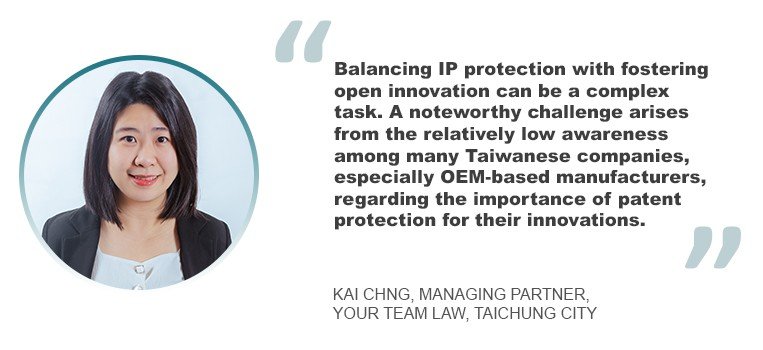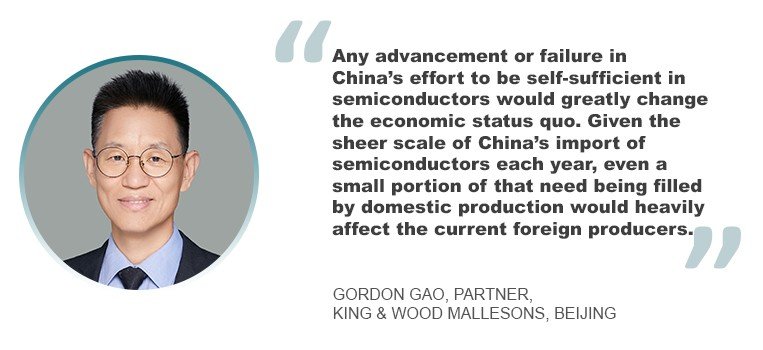Additionally, India boasts a substantial pool of skilled professionals and a burgeoning startup ecosystem, which have contributed to the rising tide of patent applications and technology-related IP. The startup ecosystem has thrived with support from initiatives like Startup India, offering financial assistance and expert guidance to emerging enterprises. This has enabled startups to explore innovative ideas and seek protection for their IP, driving growth in the sector.
“India has produced a range of ground-breaking innovations in technology and IP that have garnered international acclaim and reshaped industries, both at home and on the global stage,” said Mudit Kaushik, a partner at Verum Legal in Delhi. “Covaxin, developed by Bharat Biotech, is a prominent example. This indigenous Covid-19 vaccine has been used in over 100 countries, significantly impacting the global pandemic response. It exemplifies how Indian innovation is addressing global challenges and saving lives worldwide. Aadhaar, India’s unique identification number system, has not only streamlined access to government and private sector services but has also inspired similar identification systems globally. Its impact extends beyond India’s borders, as other countries explore the potential of such systems for efficient service delivery.”
He added that the Unified Payments Interface (UPI) is another standout innovation, revolutionizing digital payments in India and now boasting over a billion users. It simplified financial transactions within the country and gave potential to transform cross-border payments, enhancing global financial connectivity. This innovation illustrates how technology can bridge geographical boundaries and facilitate international financial interactions.
India’s contributions to AI research and development are also noteworthy as Indian companies such as Infosys and Wipro actively develop AI-powered applications across various industries, from finance to healthcare. These AI innovations are expected to significantly impact the global economy, with Indian companies at the forefront of this transformative journey.
“AI is not only improving business operations but also enhancing customer experiences, driving its adoption across industries,” said Kaushik. “Moreover, India’s leadership in deploying 5G technology, led by companies like Jio and Airtel, is transforming various sectors. This high-speed connectivity is enabling real-time data exchange, remote-controlled robotics and advanced healthcare services. The impact of 5G extends beyond India’s borders, as global industries look to leverage its capabilities for enhanced productivity and innovation.”
Taiwan: Government support, academia and tech companies boost surge in patent filings
Similarly in Taiwan, the government has actively supported innovation and R&D through various initiatives, such as tax incentives, grants and research subsidies. The Ministry of Science and Technology (MOST) and the Taiwan Intellectual Property Office (TIPO) have played significant roles in promoting IP protection.
Furthermore, Taiwan has several renowned research universities, such as National Taiwan University and National Tsing Hua University, which foster innovation and contribute to patent filings. The country is also home to leading technology companies such as Taiwan Semiconductor Manufacturing Company (TSMC), Foxconn and ASUS, engaged in the global technology supply chain for manufacturing and supplying components. These companies continually invest in R&D and file numerous patents to protect their innovations, contributing to the surge in patent filings.
Kai Chng, managing partner at Your Team Law in Taichung City, added that Taiwan has made significant strides in semiconductor technology, with TSMC leading the way in advanced chip manufacturing processes.
“Innovations in electric vehicles (EVs) and renewable energy technologies have gained recognition. Companies like Foxconn have ventured into EV production,” she said. “According to a recent study released by the World Intellectual Property Organization (WIPO), computer technology taking the lead in the WIPO’s Patent Cooperation Treaty (PCT) applications suggests Taiwan’s strong presence in global technology innovation. This could be attributed to the emphasis on software development and digital solutions.”
Meanwhile, the prominence of digital communication in PCT applications suggests Taiwan’s contribution to the development of communication technologies, likely including 5G and related innovations, said Chng.
“Taiwan’s biotech and healthcare sectors have also seen notable developments, especially in precision medicine and medical devices,” she added. “These innovations are reshaping industries globally, driving advancements in consumer electronics, clean energy and healthcare.”
Government policies in research and development
In China, active R&D resulted in the surge in patent filings and technology-related IP. Behind that were huge and climbing R&D investments and supporting policies from the government. According to the PRC National Bureau of Statistics, overall R&D investment in 2022 in China exceeded Rmb3 trillion (US$416 billion) – contributed by enterprises, research institutions and universities nationwide – which is 10 percent higher than in 2021.
According to Gordon Gao, a partner at King & Wood Mallesons in Beijing, the Chinese government issued a series of beneficial policies to encourage innovation, such as preferential financial and tax policies, talent attraction policies and funding support policies. For example, he said, based on a 2023 policy announced jointly by the PRC Ministry of Finance and the State Taxation Administration, an extra 100 percent of the amount of R&D expenses incurred by an entity could be deducted before tax payment, in addition to the deduction of actual expenses as prescribed in previous policies.
“To encourage domestic semiconductor R&D and manufacturing given the U.S.-China trade tension, the Beijing government awards up to Rmb30 million (US$4.17 million) for the first round of the tape-out process (a crucial but expensive step before mass production of a chip) of certain high-end chips,” he said. “China also founded a state-owned fund, such as that of the China Integrated Circuit Industry Investment Fund, known as the Big Fund, to invest in promising entities in the semiconductor industry.”
Among China’s recent innovations in technology and IP that have gained global recognition include several technical fields, such as 5G communication, high-speed railway, cloud computing, digital payment, quantum communication, unmanned aerial vehicles (UAV) and semiconductors.
As of 2023, China’s cloud computing market has exceeded Rmb1.5 trillion (US$208 billion), becoming one of the largest cloud computing markets in the world.
“Besides, Chinese cloud computing product ranks first worldwide in the four core evaluations of computing, storage, network and security,” said Gao. “China has developed great advantages in the field of UAV research and manufacturing. China’s UAV sales account for more than 70 percent of the total sales worldwide, making China the main producer and exporter of the global UAV market.”
For 5G communication, there are currently more than 210,000 5G standard essential patents declared globally, involving nearly 47,000 patent families, of which China has declared more than 18,000 patent families, accounting for nearly 40 percent, ranking first in the world. Given China’s voice in setting standards in the field of 5G communications, China will have stronger negotiating power on patent licence fees worldwide in the mobile phone and new-energy vehicle communication industries.
As for the semiconductor industry, statistics show that as of September 30, 2022, 55 percent of 69,190 global patents for semiconductors filed in 2022 were Chinese in origin. Thus, China focused on boosting domestic semiconductor production to reduce dependence and try to be self-sufficient.
Collaboration among sectors
Collaboration between governments and industries to safeguard and bolster IP rights is essential, particularly with technology-related IP. According to Kaushik, several noteworthy initiatives and policies underscore this cooperation. The Indian government has taken “significant steps to fortify IP laws and enhance enforcement mechanisms.”
“Recent legal amendments have reinforced protection for patents, trademarks and copyrights. In addition, a concerted effort has been made to educate businesses and consumers about their IP rights, thereby fostering IP awareness and compliance,” he shared. “Cross-border collaboration on IP protection is actively promoted by the government. India’s active participation in the WIPO and its numerous bilateral and multilateral agreements highlight the country’s commitment to global cooperation in IP matters.”
There are also specific initiatives and policies to advance IP protection and promotion in India. For instance, the National Intellectual Property Rights Policy (NIPR), launched in 2016, is instrumental in fostering creativity and innovation within the country. The NIPR encompasses various initiatives, including the establishment of a National IPR Facilitation Centre and the launch of a nationwide awareness campaign. These measures signify the integral role of IP in India’s innovation ecosystem.
Meanwhile, Taiwan has established a comprehensive legal framework for IP protection with stringent enforcement mechanisms. Among them is that the government provides diverse supports to promote the importance of IP.
According to Chng, the TIPO has been promoting the Positive Patent Examination Pilot Program for Startup Companies in 2023. This program is established to encourage newly founded companies and provide effective assistance on their patent applications, she explained. Additionally, the TIPO also offers new examination services for design patents, including options for accelerated examination and simultaneous adjustment of the deferred examination period for design patents.
She continued: “The TIPO established a platform called Industrial Patent Knowledge Platform (IPKM), which is a one-stop service tool designed to assist businesses in their IP applications and research. It offers a range of features, including access to patent documents, government agency news, column articles, information about IP systems in different countries, IP videos and insights from local academic experts. IPKM also provides various intelligent services such as industry classification, technology term recommendations, automatic search expansion and text-based searches.”
Overall, Chng said IPKM serves as a “user-friendly platform for data viewing and knowledge management, helping businesses simplify their search for technical information and stay updated on global patent trends.”
The TIPO and other industries have also been collaborating in conducting IP awareness campaigns. Bilateral and multilateral agreements, such as trade agreements and collaborations with international organizations, help safeguard IP rights. For example, TIPO has launched the TW-Support Using the PPH Agreement (TW-SUPA) Examination Program since March 1, 2012, to enhance the efficacy of sharing examination results among patent offices and encourage applicants to take advantage of expedited examination under PPH programs.
However, it is important to note that in this evolving landscape, many challenges are in the offing. One significant challenge is the need for stronger protection against counterfeiting and patent trolls.










